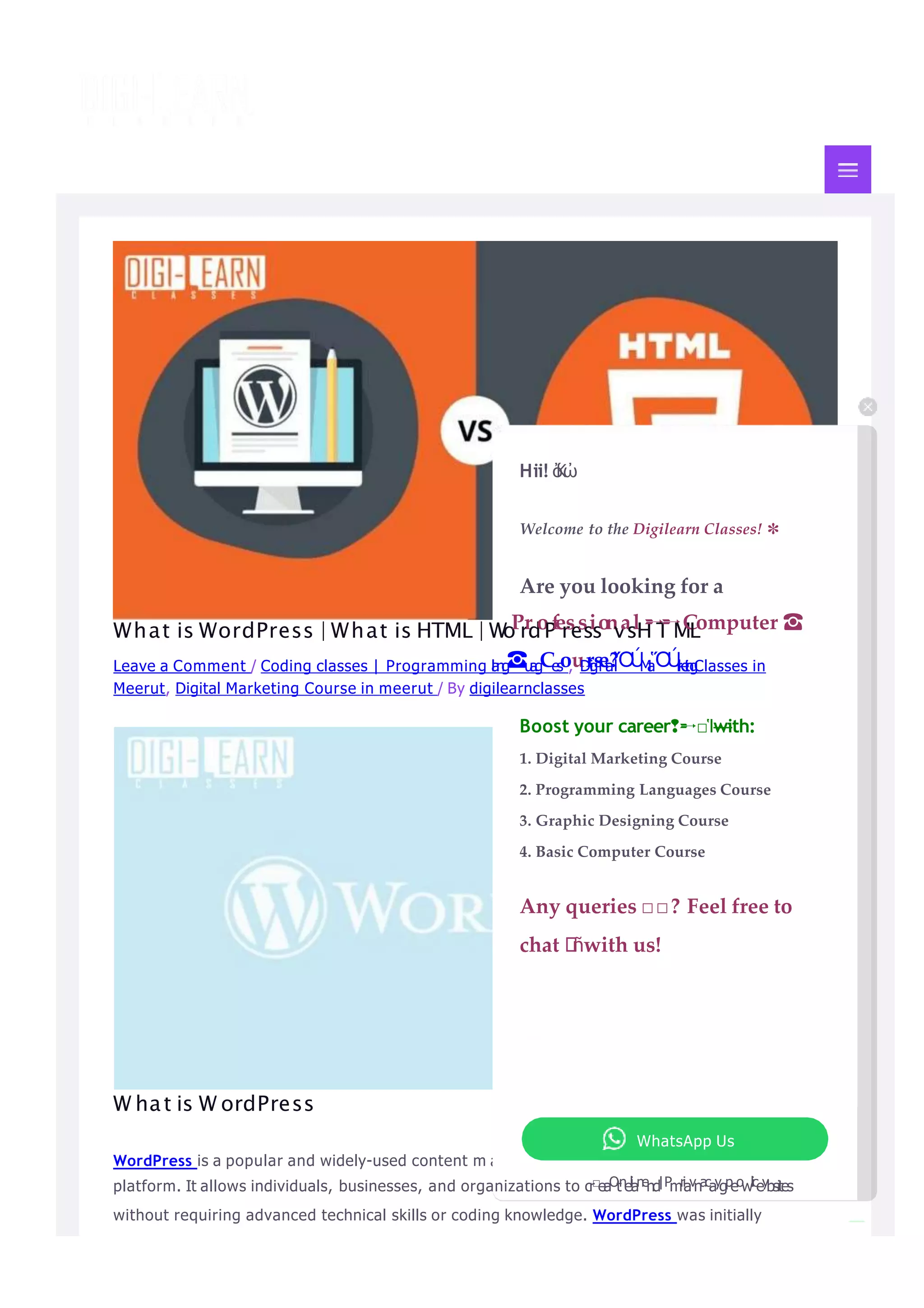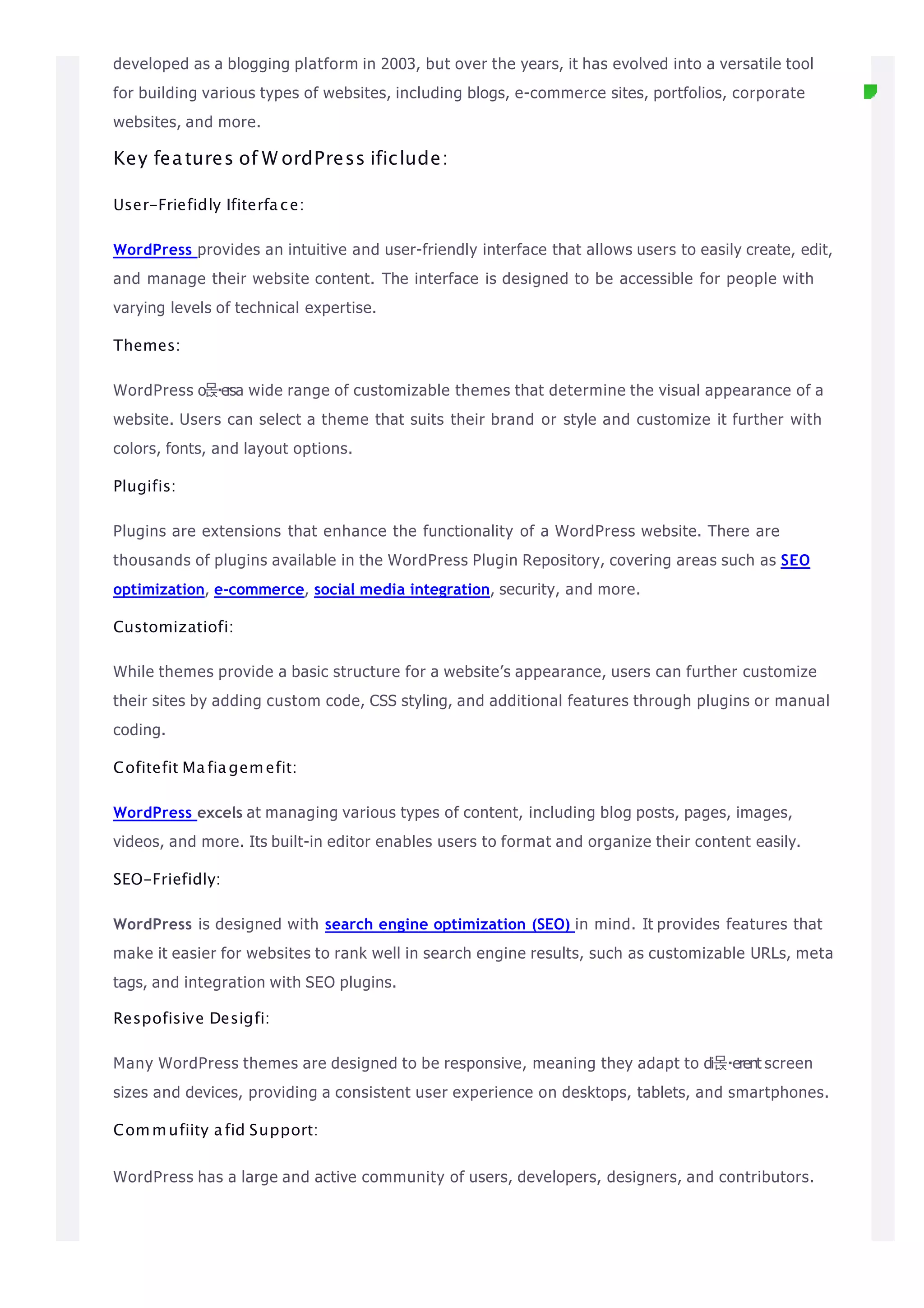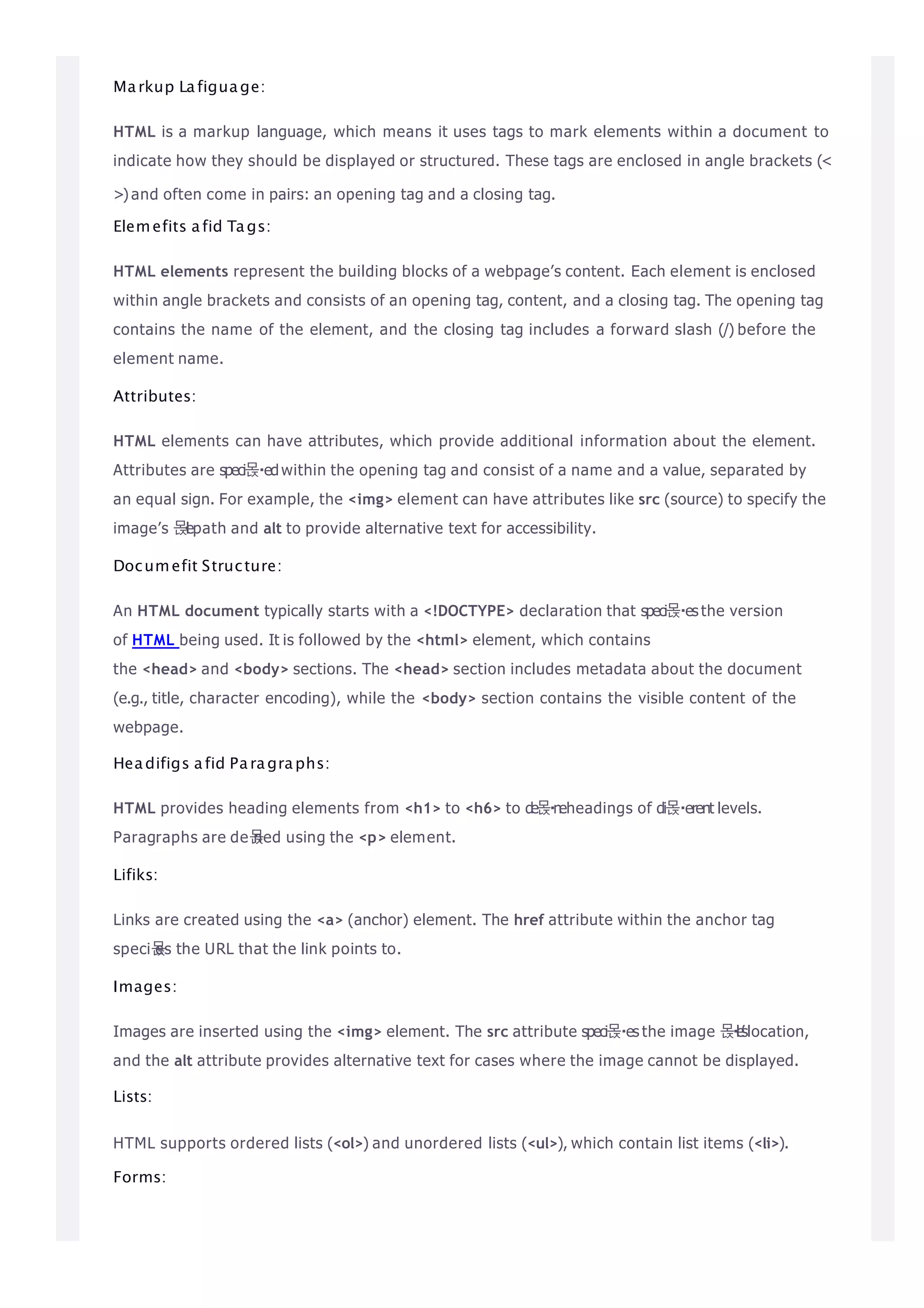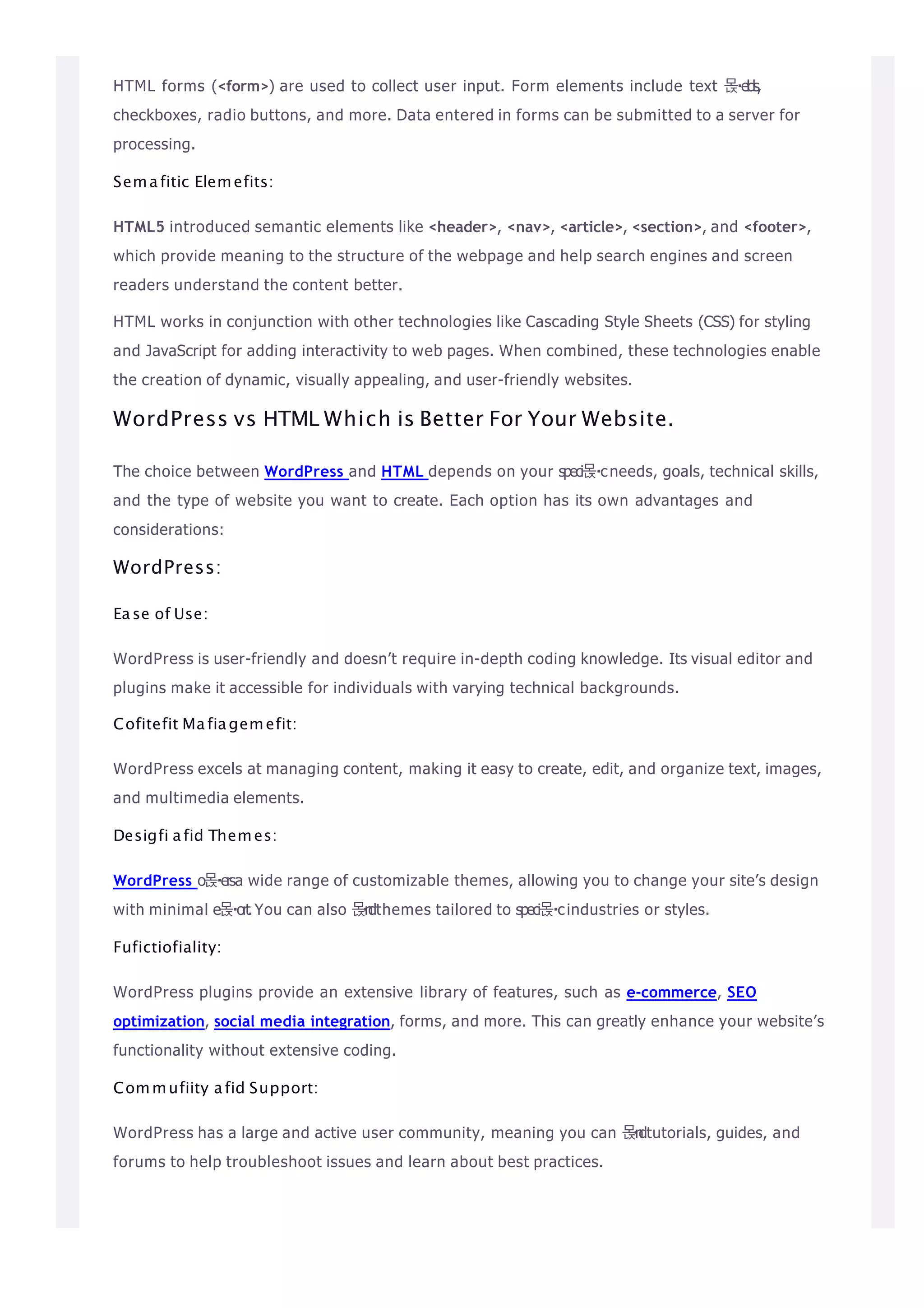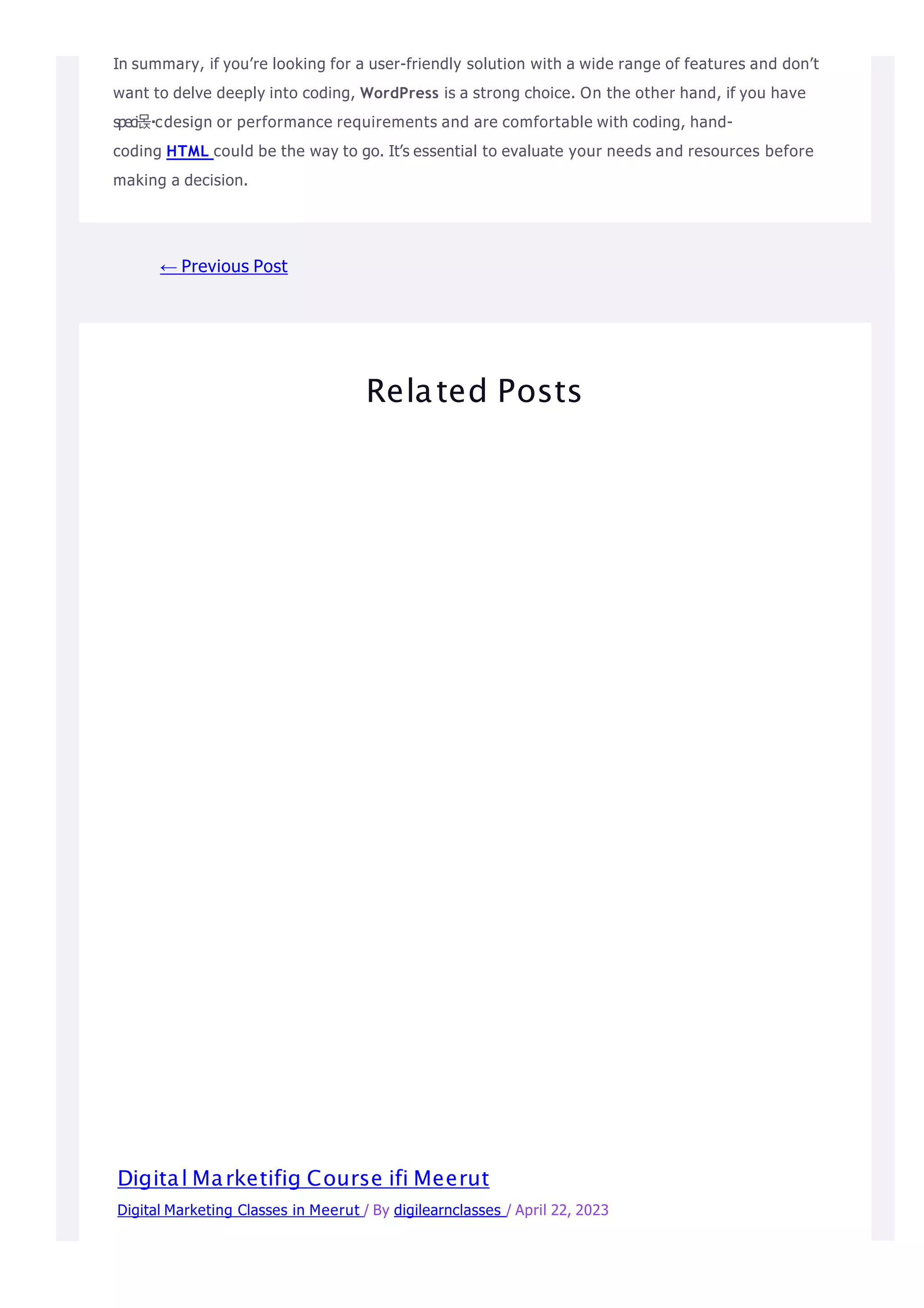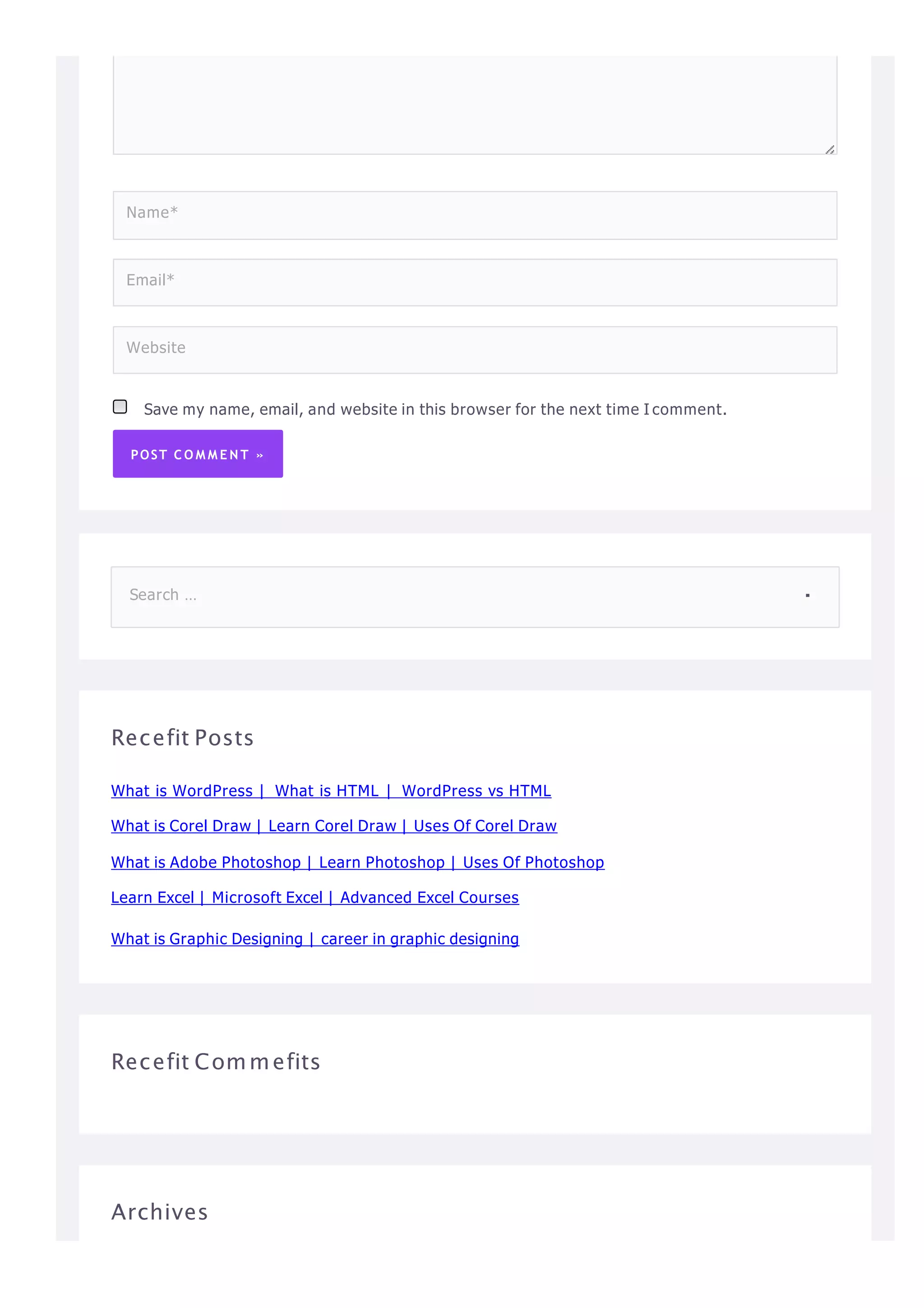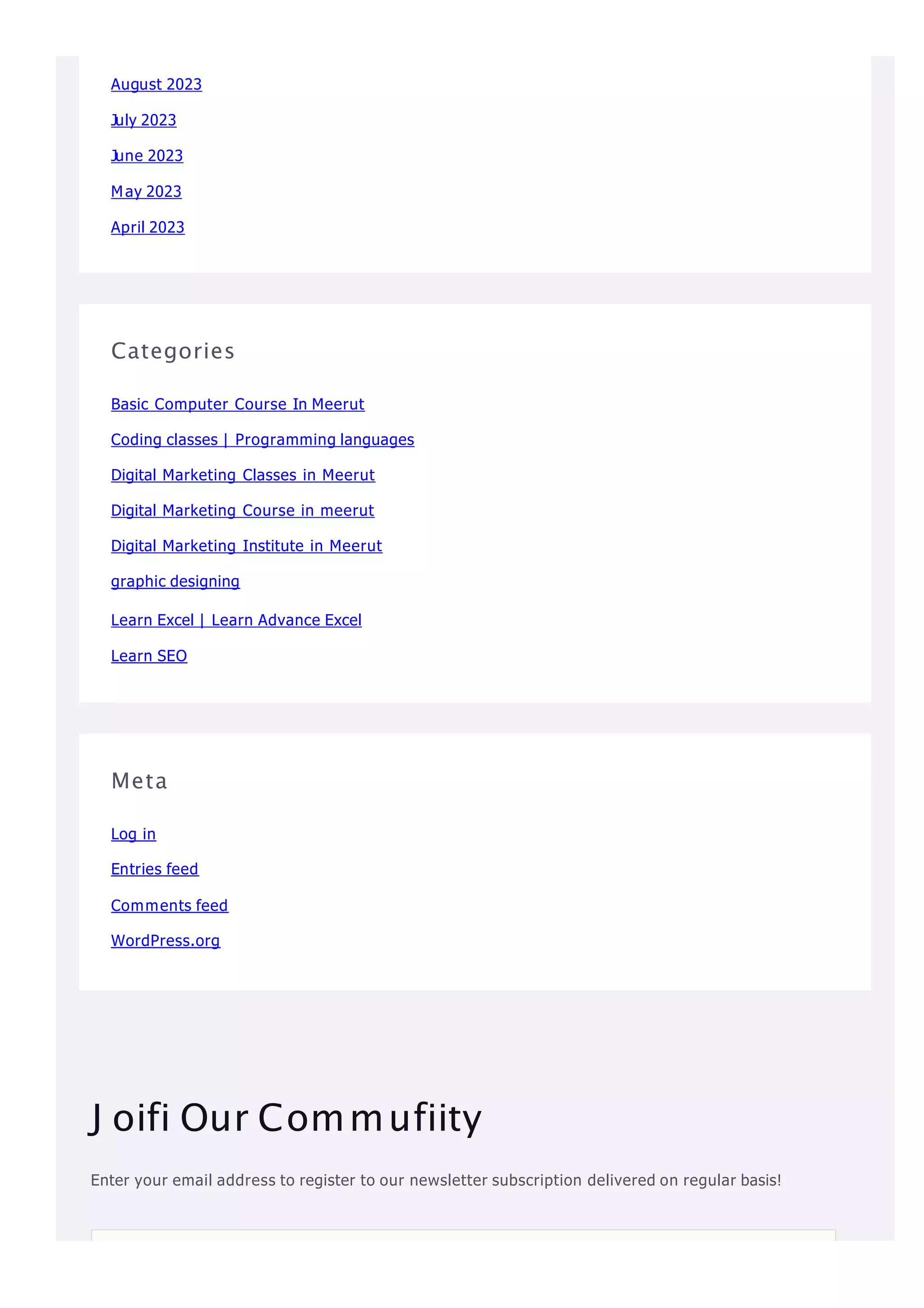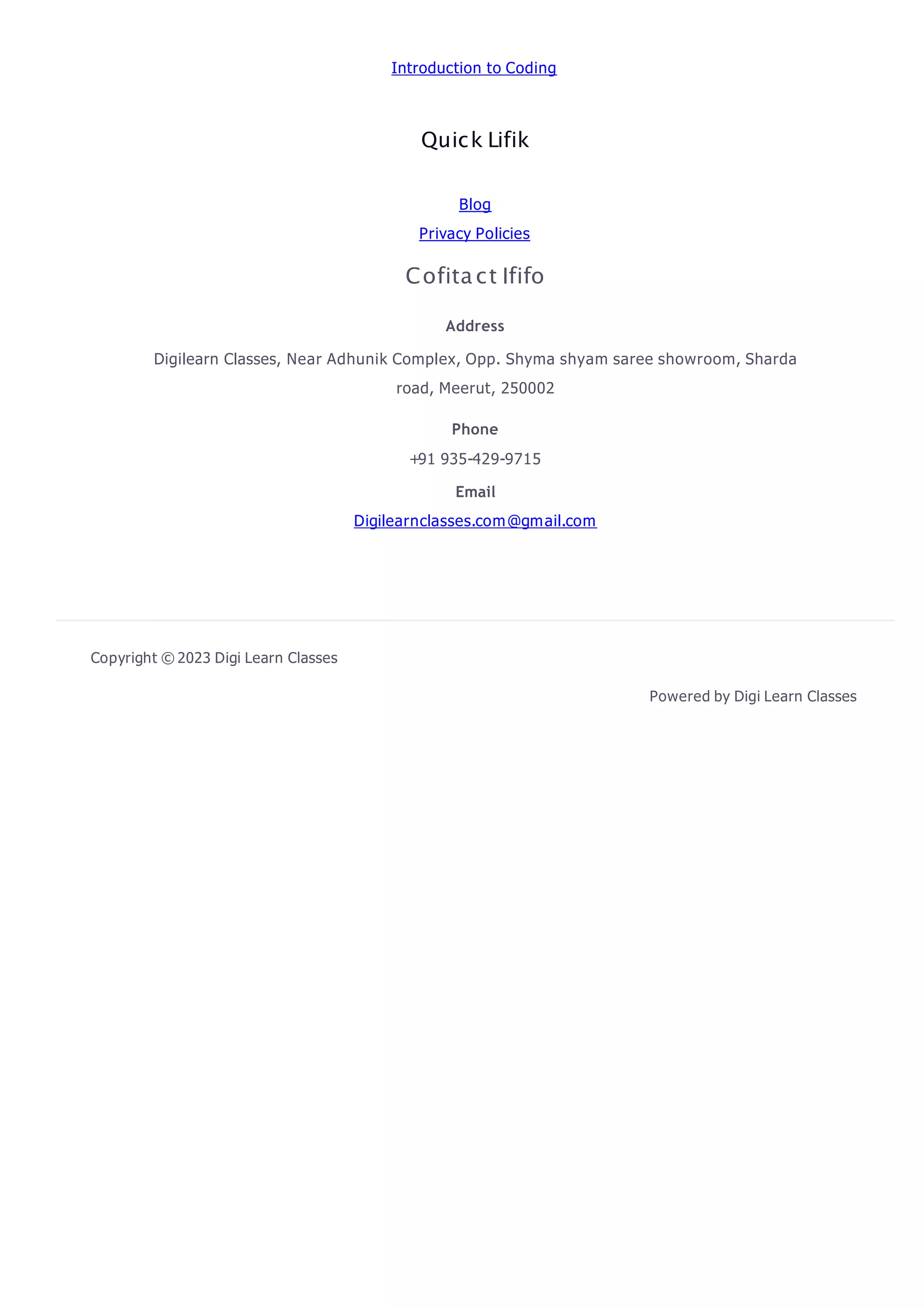The document discusses WordPress as a widely-used content management system enabling users to create various websites easily without advanced coding skills. It highlights key features such as user-friendly interfaces, customizable themes, and extensive plugin options, and compares WordPress with HTML, noting that WordPress is more accessible for beginners while HTML allows for complete control over design and performance. The summary emphasizes the importance of considering specific needs, technical skills, and website goals when choosing between WordPress and HTML.
